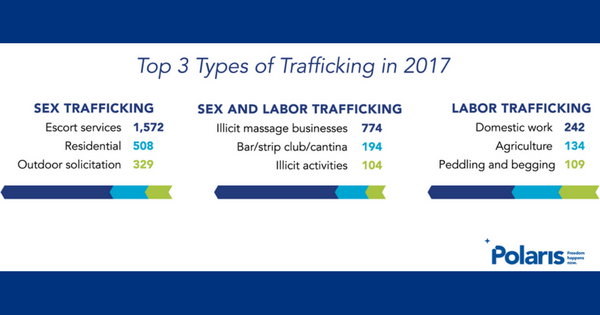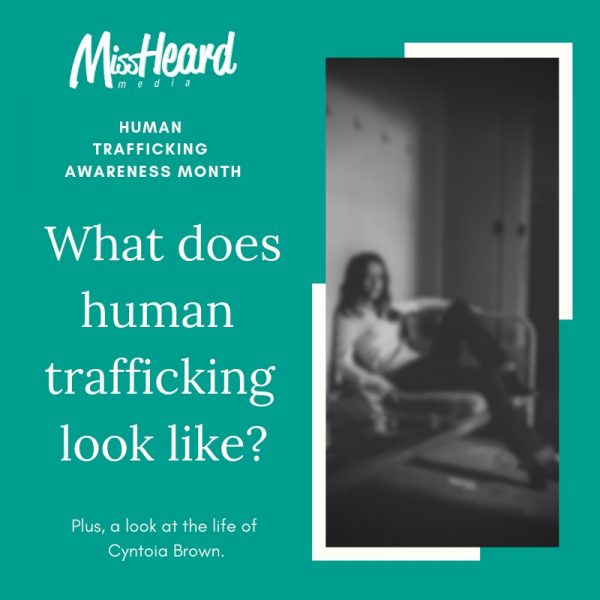What Does Trafficking Look Like?
Human Trafficking Prevention Month
(Plus a look at the life of Cyntoia Brown)
There are millions of people around the world who are not free. All around the world, traffickers trick, defraud, manipulate, threaten, or otherwise force individuals into labor and/or sex, usually in deplorable, unsafe, conditions. Common types of labor trafficking include agriculture, domestic work, cleaning services, etc. Sex trafficking can include escort services, pornography, brothels, etc.
It is important to note that anytime someone under the age of 18 is involved in the sex trade* (ie: prostitution, pornography, etc.) it is legally considered human trafficking. Minors cannot legally consent to sex with adults. There is no such thing as a child prostitute.
January is Human Trafficking Awareness Month, as designated by President Obama in 2016. Polaris Project describes trafficking as “the business of stealing freedom for profit.” It is a multi-billion-dollar industry, and there are 20-40 million people estimated to be in some form of slavery. Anyone can be a victim of trafficking. It is not a “far-away” problem- it happens around the world, including in the US. Trafficking has been reported in all 50 US states.
It is difficult to gather exact statistics because less than 1% of victims are identified.

Trafficking victims can be of any race, gender, sexuality, nationality, etc. LGBTQ boys and young men are seen as especially vulnerable to trafficking. Additional risk factors include migration, substance abuse, mental health issues, involvement in the child welfare system, and/or being a runaway or homeless youth. Traffickers tend to prey on people who are vulnerable and isolated.
A recent high-profile case sheds some light on how this can happen to a young woman in the US.
Cyntoia Brown was born in 1988 to a teenage mother who was unable to care for her due to alcoholism and drug addiction. Cyntoia’s mother drank and used drugs while she was pregnant, which may have given Cyntoia developmental issues, including poor impulse control and a disconnect between thoughts and reality. Cyntoia was shuttled between foster homes and her grandmother’s home, eventually running away in 2004.
By the time Cyntoia was 16, she had been raped and assaulted multiple times. Her 24-year-old abusive boyfriend Garion Jarvis, also known as “Kut-Throat,” was a violent man who threatened her with guns and abused her physically and sexually. He became her pimp and forced her to have sex for money so that they would have money to live. In many trafficking cases, the perpetrator is someone the victim knows.
This is common tactic that traffickers use. Traffickers may initially treat victims well, buying them flowers, clothes, complimenting them, basically acting like a wonderful partner. The victim falls in love, and the trafficker uses that love to manipulate the victim. Victims of trafficking are often isolated, alone, and lacking support systems. A trafficker seems like a caring, loving individual at first, but shifts to emotional, physical, sexual abuse to control their victim. [For more info]
In mid-2004, 16-year-old Cyntoia was picked up by Johnny Allen, a 43-year-old man, and taken back to his house. Brown shot and killed Allen while he slept. She admitted to killing him and was sentenced to life in prison, and at least 51 years in prison before being eligible for release at Tennessee Prison for (adult) Women. During her trial, Cyntoia was discouraged from testifying on her own behalf, because of her developmental delays. You can read the full timeline of her trial for yourself.

In prison, Cyntoia earned her GED and a college degree. She is described as smart, funny, opinionated, and well-read. This week, Governor Bill Haslam granted Cyntoia clemency after years of tireless advocacy from celebrities and everyday individuals. She will be released from prison in August and will remain on probation for ten years. She is required to get a job and complete 50 hours of community service, working with at-risk youth. Cyntoia is reportedly excited to help other young girls.
Cyntoia Brown will be 31 when she is finally free. Her story is just one of millions.
But what can you do? As an everyday individual, you can learn the signs of trafficking, report trafficking instances, hang signs in airport and truck stop restrooms with DoSomething, and volunteer with anti-trafficking organizations. See more ideas here!
Here is a video from Shared Hope on recognizing the signs of sex trafficking:
Warning signs may include some combination of the following:
Signs of physical and/or sexual abuse
Unexplained absences from school
New ways of dressing, expensive clothes, accessories, and shoes
Overly tired in class
Withdrawn, depressed, distracted
Older partner new friends with a different lifestyle
Disjointed family connections, running away, homelessness
Seems fearful of jealous/controlling partner
Inconsistent stories
Lying about age/has no ID
To connect with an anti-trafficking service:
National Human Trafficking Hotline: 1-888-373-7888
The National Human Trafficking Hotline is a national, toll-free hotline, available to answer calls from anywhere in the country, 24 hours a day, 7 days a week, every day of the year.
National Runaway Safeline: 1-800-RUNAWAY
The National Runaway Switchboard serves as the federally-designated national communication system for homeless and runaway youth. Through hotline and online services, NRS provides crisis intervention, referrals to local resources, and education and prevention services to youth, families and community members throughout the country 24 hours a day, 365 days a year.
National Center for Missing & Exploited Children: 1-800-843-5678
If you have information about a missing child or suspected child sexual exploitation, call to report it or visit their website, www.missingkids.com/cybertipline.com.
Selah Freedom
Selah Freedom and Selah Way Foundation offers a variety of resources for parents and teachers to better understand the signs of trafficking and how to talk to young people about the issue.
*Note: Not everyone involved in sex work is trafficked. There are consenting adults who engage in sex work of their own free choice, not as a result of force, fraud, or coercion.
Related Reading
The Photo that Changed my Life by Diana Scimone
